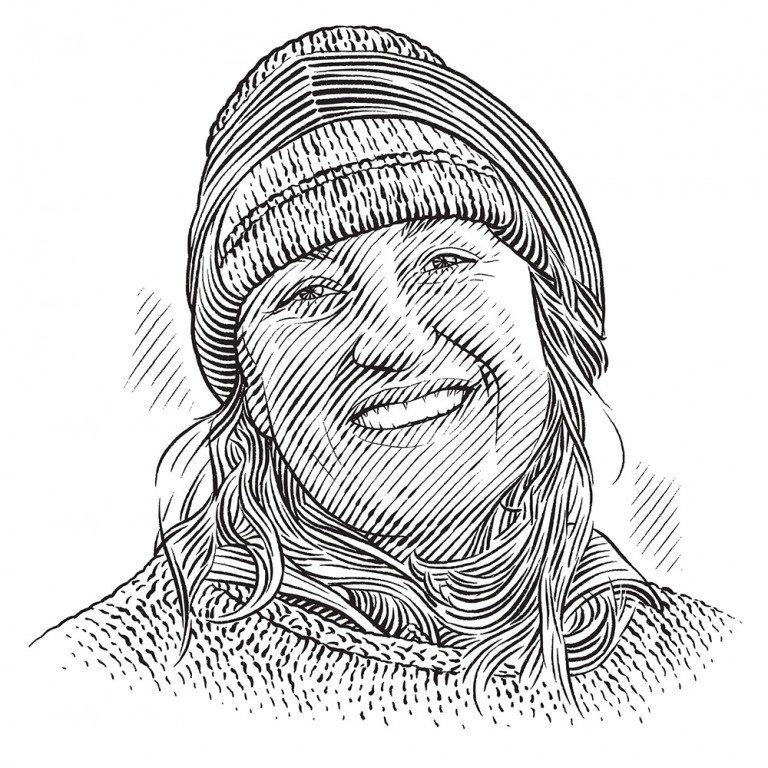Listen and learn
Along the coast of British Columbia, sound rather than sight is what researchers rely on to locate and identify the whales they are studying – and what the whales themselves rely on to communicate and find food. But what would happen if tankers carrying liquid natural gas were to ply the same routes as the whales, overlaying with their own noise the sounds that are so important to whales?
It is cold and wet, and at the moment there is no source of heat in this tiny whale research cabin located on Fin Island. The station is still under construction, power comes from a few solar panels and batteries, the outhouse is a bit of walk from the shelter and the walls are still bare. We catch rain water for drinking and washing and at night the sleeping arrangements are very tight.
But the moment you step outside onto the deck, you feel the magic of this place. You’re struck by the openness of space, an ocean just metres from your feet, mountain ranges in the background and a sunset that casts over it all a fiery blaze, with oranges and pinks from the depths of your imagination that change constantly and reflect back from the ocean’s surface. When the whales make their way into the picture everything comes into focus and we remember why we are here. This station is built for one purpose: to listen to and observe the behaviour of whales so that we can learn how best to protect these precious creatures. A route has been proposed along which tankers carrying liquid natural gas will travel these pristine waterways – and it could destroy this safe haven for whales. Our team this year is here to start a unique project that will enable us to better understand the underwater world of whales and hopefully encourage others to follow our lead and protect these coastal fjords.
Back in the cabin, we are trying to organise the small space to somehow accommodate three more people, who will be arriving tomorrow to help us install four hydrophone stations. I can only hope they are rugged enough in spirit to deal with this and the fact that the Great Bear Rainforest of British Columbia is living up to its reputation as one of the wettest places on earth. By the end of the day, with the help of Rob and Rosie, two very keen assistants from Australia, we feel that we’ve done the best we can to make the next 14 days as comfortable as possible.
The next morning, I canoe to our boat and make my way to Hartley Bay to pick up the crew. Tom Dakin is a scientist who works for Ocean Networks Canada and is an expert on how hydrophones function. A hydrophone is the instrument that connects us to the underwater world of whales. Our goal is to set up each hydrophone in at least 80 feet (25 metres) of water close to shore. For this we will need a diver, and an old friend from the south has volunteered to come and help us out. His name is Mike and he is definitely one of those coastal characters who will be talked about for generations; a little grumpy at times, but it’s all part of his old-timer charm. Then there is Chenoah, my research assistant for the season, who is truly a gem and can read my mind and knows what needs to be done before I can even speak the words. I pick them up at the ferry and after lots of hugs and hellos, we grab our boxes of food, jump back into the boat and are off to Fin Island.
Our first day as a team involves going to each of the four hydrophone locations by boat to determine line of sight from each one back to Fin Island. Once we’ve done this, we need to calibrate each hydrophone to ensure we are measuring ocean noise and the source level of whales as effectively as possible. Installing hydrophones is no easy task, especially in such a remote area. You need to find a location suitable for the hydrophone, which is connected to an 80-pound (36-kilogram) cement block, to be secured 60 feet (18 metres) underwater. This needs to be close enough to land to enable us to link the hydrophone to the shore by means of a cable that will follow the intertidal zone and connect to a land-based transmitter that is powered by solar panels and a battery bank.
Setting up the first two hydrophones goes smoothly and we take this as good karma for the rest. We probably shouldn’t be so optimistic, as every project has its nadir. Ours comes as we try to install the third hydrophone at Gil Island. In hindsight, we should have attempted this one first as we knew it would be the most difficult. The location is a steep underwater cliff and Mike has to find a small pinnacle on which he can place the cement block with the hydrophone. He finds one, but the block falls off the little shelf. He dives to 100 feet (30 metres) and from there can see the cable as it stretches down into the abyss. Returning to the boat, he explains the situation. We all know the cable will never hold that kind of weight for long. Mike has already done one too many dives for the day, so we tie a float to the line attached to the cable and hydrophone and, with heads hanging low, we go back to the cabin. We can do nothing more until tomorrow, but we know that chances are the hydrophone will be gone by then.
